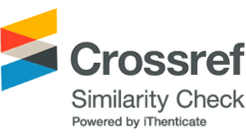Abstract
References
Information
Gonzalez-Orozco, C.E., M.C. Ebach, S. Laffan, A.H. Thornhill, N.J. Knerr, A.N. Schmidt-Lebuhn, C.C. Cargill, M. Clements, N.S. Nagalingum, B.D. Mishler and J.T. Miller. 2014. Quantifying phytogeographical regions of Australia using geospatial turnover in species composition. PLoS One 9(3):e92558.
10.1371/journal.pone.009255824658356PMC3962426
Korea Forest Service. 2021, April 21. Taebaek Yeonhwasan forest. Korea Forest Service. Retrieved 24 April 2023, from https://www.forest.go.kr/kfsweb/cop/bbs/selectBoardArticle.do?bbsId=BBSMSTR_1820&mn=NKFS_03_01_13_02&nttId=3157674.
Korea Meteorological Administration. 2022. Korea Meteorological Administration Open MET Data Portal, ASOS data from site Taebaek 2017‑2021. Retrieved 10 March 2023, from http://www.data.kma.go.kr.
Korea National Arboretum. 2022a. Checklist of Vascular Plants in Korea (Native Plants). Retrieved 28 Jan. 2022, available from http://www.nature.go.kr/kpni/index.do.
Korea National Arboretum. 2022b. Checklist of Vascular Plants in Korea (Alien Plants). Retrieved 28 Jan. 2022, available from http://www.nature.go.kr/kpni/index.do.
- Publisher :The Plant Resources Society of Korea
- Publisher(Ko) :한국자원식물학회
- Journal Title :Korean Journal of Plant Resources
- Journal Title(Ko) :한국자원식물학회지
- Volume : 36
- No :4
- Pages :314-340
- Received Date : 2023-03-15
- Revised Date : 2023-04-10
- Accepted Date : 2023-04-19
- DOI :https://doi.org/10.7732/kjpr.2023.36.4.314




 Korean Journal of Plant Resources
Korean Journal of Plant Resources







